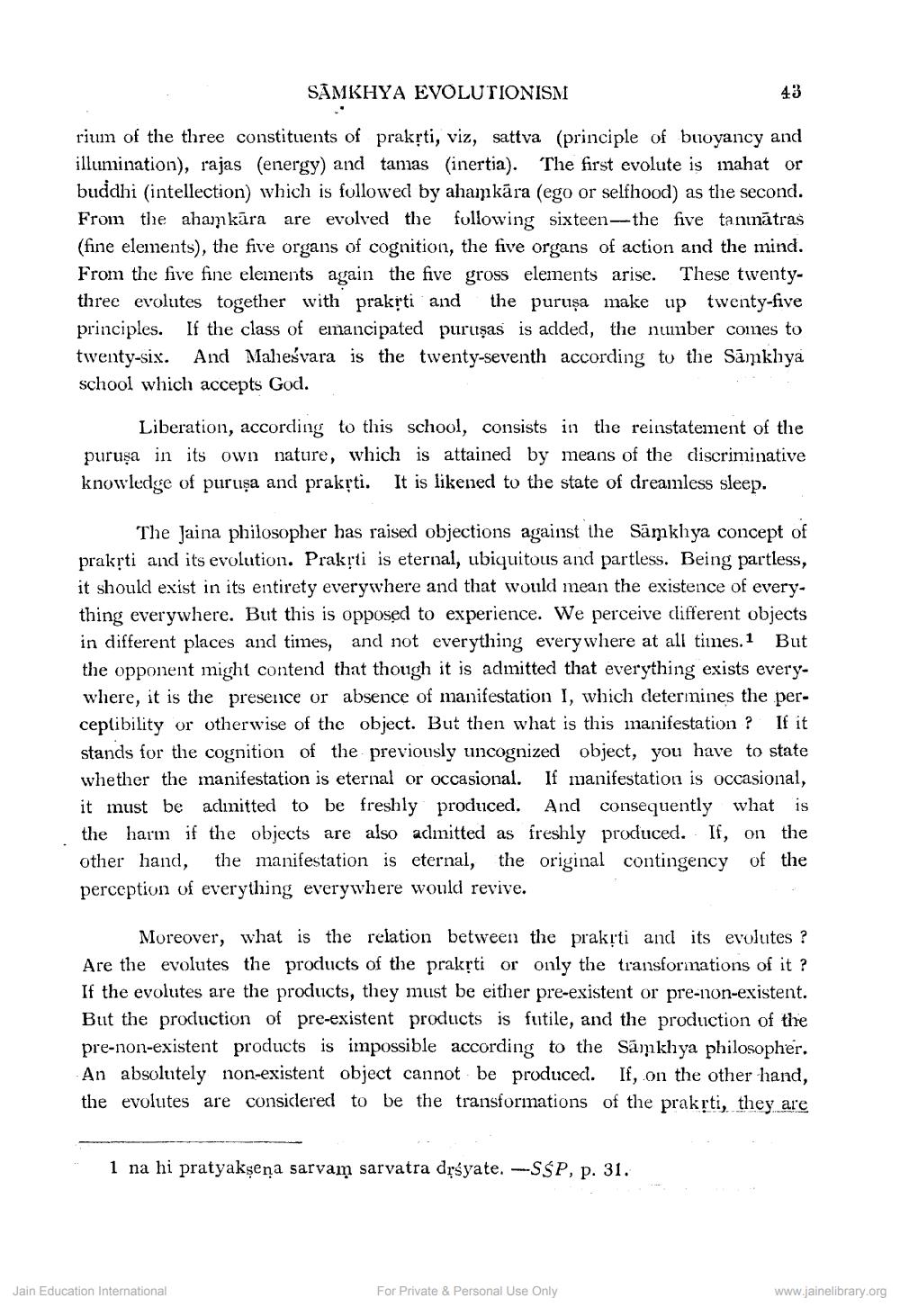________________
SAMKHYA EVOLUTIONISM
rium of the three constituents of prakṛti, viz, sattva (principle of buoyancy and illumination), rajas (energy) and tamas (inertia). The first evolute is mahat or buddhi (intellection) which is followed by ahamkāra (ego or selfhood) as the second. From the ahamkara are evolved the following sixteen-the five tanmatras (fine elements), the five organs of cognition, the five organs of action and the mind. From the five fine elements again the five gross elements arise. These twentythree evolutes together with prakṛti and the puruşa make up twenty-five principles. If the class of emancipated purusas is added, the number comes to twenty-six. And Maheśvara is the twenty-seventh according to the Samkhya school which accepts God.
Liberation, according to this school, consists in the reinstatement of the purusa in its own nature, which is attained by means of the discriminative knowledge of purusa and prakṛti. It is likened to the state of dreamless sleep.
The Jaina philosopher has raised objections against the Samkhya concept of prakṛti and its evolution. Prakṛti is eternal, ubiquitous and partless. Being partless, it should exist in its entirety everywhere and that would mean the existence of everything everywhere. But this is opposed to experience. We perceive different objects in different places and times, and not everything everywhere at all times.1 But the opponent might contend that though it is admitted that everything exists everywhere, it is the presence or absence of manifestation I, which determines the perceptibility or otherwise of the object. But then what is this manifestation ? If it stands for the cognition of the previously uncognized object, you have to state whether the manifestation is eternal or occasional. If manifestation is occasional, it must be admitted to be freshly produced. And consequently what 1s the harm if the objects are also admitted as freshly produced. If, on the other hand, the manifestation is eternal, the original contingency of the perception of everything everywhere would revive.
43
Moreover, what is the relation between the prakṛti and its evolutes ? Are the evolutes the products of the prakṛti or only the transformations of it? If the evolutes are the products, they must be either pre-existent or pre-non-existent. But the production of pre-existent products is futile, and the production of the pre-non-existent products is impossible according to the Samkhya philosopher. An absolutely non-existent object cannot be produced. If, on the other hand, the evolutes are considered to be the transformations of the prakṛti, they are
1 na hi pratyaksena sarvam sarvatra dṛśyate. --SŚP, p. 31.
Jain Education International
For Private & Personal Use Only
www.jainelibrary.org




